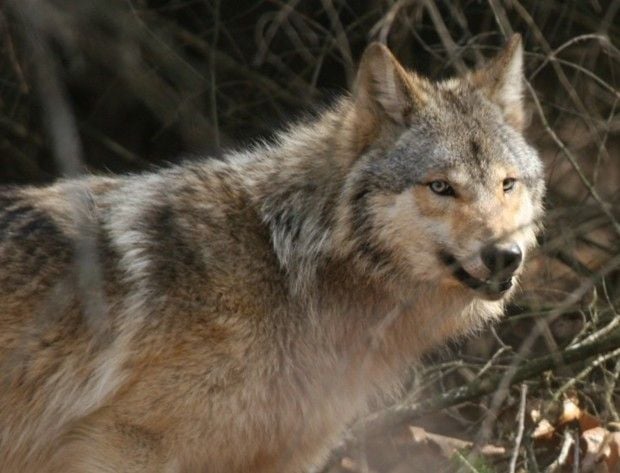Add the gray wolf as an another occasional visitor partaking in the natural resources for which the Wisconsin Dells area is renowned.
The animal -- which late last year was added again to the Federal Endangered Species List and has slowly migrated from northern Wisconsin in a southerly direction during the past 40 years -- now has a tiny population in the area, according to the Wisconsin Department of Natural Resources.
In its annual wolf-tracking census taken this past winter, the DNR determined that what amounts to a single pack of “three or four” wolves is residing in the area where Adams, Columbia and Marquette counties meet near Lake Mason, stretching west to the Sauk-Columbia County border only a few miles down the Wisconsin River from Juneau County.
Except for an area that takes up much of Crawford County to the southwest, this small pack represents the farthest south wolves have migrated in Wisconsin since their numbers were declared non-existent in the state in the 1950s. “This is the next stop on what has been a 40-year expansion,” said DNR carnivore specialist David MacFarland, who coordinates the agency’s efforts to manage and monitor the wolf population in Wisconsin.
The area’s isolated patch of wolf-occupied real estate is Wisconsin’s smallest and can be viewed on the DNR’s “depredation and threats” map for wolves, which also illustrates the state’s “probable wolf pack range.” To view the map, long on to (http://dnr.wi.gov/topic/WildlifeHabitat/wolf/documents/WolfDepsMap.pdf).
Two wolf-related cattle "depredations" -- wolf attacks that result in a livestock death -- have occurred since 2013 in Columbia County not too far south of the local pack’s identified area including one earlier this spring. And wolf numbers in the area are sure to increase as the state’s growing wolf population continues to expand southward, MacFarland said, but that is not cause for alarm. “There might be three or four wolves” in the entire area, MacFarland said with a chuckle. “It’s not a wolf behind every tree.”
Nonetheless, the animal’s return to the endangered species list in late 2014 means it’s no longer legal or permissible to kill a gray wolf even if it does represent a threat to livestock or even pets. Permits obtained from the DNR for that purpose no longer are valid, and the department cannot use “lethal control” as part of its conflict management program as well.
A host of “non-lethal” wolf management tools are available and can be obtained by calling 1-800-433-0663, MacFarland said, if you believe you might be in the local wolf pack’s range and have livestock that needs protection. The DNR will connect you with the wildlife services division of the federal Department of Agriculture, which provides a site evaluation for landowners and recommendations for prevention and protection measures.
MacFarland said family pets in the wolf pack’s territory are not at huge risk -- as long as they aren’t of the free-ranging variety. The vast majority of wolf attacks on dogs in Wisconsin (22 total) in 2014 involved hunting dogs, specifically those let loose over wide areas to track bears. “You’ve got to think of them (wolf attacks) in context of how frequently they happen,” he said. “It’s so rare.”
Of those 22 deaths, two involved pet dogs, MacFarland said, and the common factor when wolf meets canine is a loose dog that happens to encounter a wolf or wolves in their home territory. “A dog on a leash is not really at risk,” he said. “If you are walking dog on a leash, wolves are not really a problem.”
The risk of a wolf attack on humans, MacFarland said, “is really virtually nil. We’ve never had a person injured by a wolf, ever, in the state, so there really isn’t any risk to people,” he said.
Wisconsin’s wolf population ranges between 717 and 742 and that number is expected to increase as the migration continues southward. But don’t expect to see one walking down Broadway or Wisconsin Dells Parkway, MacFarland said. They tend to stay in wooded areas and avoid human contact. “I live in Rhinelander, we have wolves all over the place (and) we don’t ever get them in town,” he said.
source



No comments:
Post a Comment